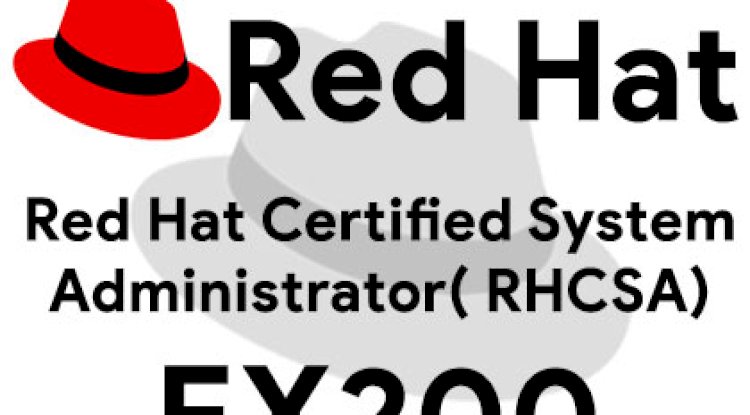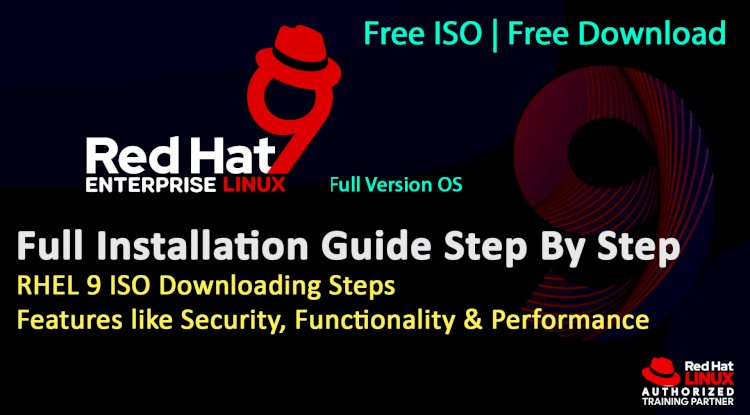Best Laptops for Running Cybersecurity Tools Like Wireshark & Metasploit | Complete Guide for Students and Professionals
Choosing the right laptop is critical for running cybersecurity tools like Wireshark, Metasploit, Nmap, and Kali Linux effectively. Whether you're preparing for certifications like CEH or OSCP, or you're a cybersecurity student or penetration tester, you'll need a laptop with a powerful CPU, sufficient RAM (16–32 GB), SSD storage, and virtualization support (VT-x/AMD-V). This blog will guide you through the best laptops in 2025 that can handle demanding security tools and labs. We’ll also answer the 30 most frequently asked questions to help you make the best decision for your ethical hacking and cybersecurity journey.
Table of Contents
- Why the Right Laptop Matters for Cybersecurity Tools
- Minimum and Recommended Laptop Specs for Wireshark and Metasploit
- Top Laptops for Cybersecurity Students and Professionals in 2025
- Real-World Example
- Dual Boot or Virtual Machines?
- Who Needs These Laptops?
- Conclusion
- Frequently Asked Questions (FAQs)
In the world of cybersecurity, having the right tools is only half the battle — the other half is having a powerful and compatible laptop that can run them effectively. Whether you're using Wireshark for packet sniffing, Metasploit for penetration testing, or running Kali Linux in virtual machines, your hardware matters. A sluggish system can ruin the experience and limit your learning or professional productivity.
This blog dives into the best laptops for cybersecurity professionals and students in 2025, specifically focusing on performance with tools like Wireshark, Metasploit, Nmap, Burp Suite, and more.
Why the Right Laptop Matters for Cybersecurity Tools
Many cybersecurity tools like Metasploit, Wireshark, and Nmap are resource-intensive, especially when used simultaneously or within virtual machines. These tools often require:
-
Strong CPU processing power for scanning and attack simulations
-
High RAM capacity to support multiple VMs and active tools
-
SSD storage for fast boot times and data access
-
Virtualization support (VT-x/AMD-V) for running Kali Linux and other OS environments
Choosing the wrong laptop can result in lag, tool crashes, and limitations in your practical training.
Minimum and Recommended Laptop Specs for Wireshark and Metasploit
| Component | Minimum Requirement | Recommended Specification |
|---|---|---|
| Processor | Intel i5 / AMD Ryzen 5 | Intel i7/i9 or Ryzen 7+ |
| RAM | 8 GB | 16–32 GB |
| Storage | 256 GB SSD | 512 GB–1 TB SSD |
| GPU | Integrated | Dedicated (for advanced tasks) |
| Display | 13–15.6” Full HD | 15.6” Full HD or better |
| Battery | 5+ hours | 8+ hours |
| Virtualization | Required (VT-x or AMD-V) | Must be enabled in BIOS |
Top Laptops for Cybersecurity Students and Professionals in 2025
1. Dell XPS 15
-
Intel i7/i9 CPU, 16–32 GB RAM, 512 GB SSD
-
Lightweight yet powerful
-
Great for dual-booting with Kali Linux
-
Excellent battery and display
2. Lenovo ThinkPad X1 Carbon (Gen 11)
-
Business-grade durability
-
Amazing Linux compatibility
-
Ideal for running long scans, VMs, and complex testing
3. ASUS ROG Zephyrus G14
-
Ryzen 9, RTX 3060 GPU, 1 TB SSD
-
Designed for high performance and multitasking
-
Perfect for offensive security labs and tool-heavy environments
4. HP Envy x360
-
Affordable with Ryzen 7 and 16 GB RAM
-
Best budget pick for beginners
-
Supports virtualization and dual-boot setups
5. MacBook Pro (M3)
-
Good for macOS users working with Docker, Parallels, or cloud labs
-
Not natively compatible with all Linux tools but excellent hardware
Real-World Example
Let’s say you’re running Wireshark to monitor suspicious traffic on a corporate network and simultaneously use Metasploit in a virtual machine to simulate an attack. If your laptop only has 8 GB RAM and a basic i3 processor, both tools may crash or lag. With a laptop having 16 GB RAM, an i7 processor, and an SSD, these tasks run seamlessly and let you analyze in real-time.
Dual Boot or Virtual Machines?
For cybersecurity work, you’ll either:
-
Dual-boot your system with Windows and Kali Linux
-
Use VirtualBox or VMware to run Kali inside your existing OS
Make sure your system supports hardware virtualization, and you allocate at least 4 GB RAM per virtual machine.
Who Needs These Laptops?
-
Cybersecurity Students preparing for certifications like CEH, OSCP, CompTIA Security+
-
Ethical Hackers & Penetration Testers who run VMs and tools together
-
Network Engineers using Wireshark and scanning tools
-
Freelancers & Bug Bounty Hunters working on diverse setups
Conclusion
Your laptop is your battlefield in the world of cybersecurity. Whether you're analyzing packets, performing penetration tests, or running multiple environments through virtual machines, having the right hardware setup is crucial. Investing in a reliable and performance-oriented laptop ensures you spend more time learning and less time waiting for tools to load.
Choose your laptop based on your current level, whether you're a student, a certification candidate, or a working professional — and ensure it supports Wireshark, Metasploit, and future tools without compromise.
Sure! Here's a detailed FAQ section with 30 frequently asked questions related to choosing the best laptop for running cybersecurity tools like Wireshark, Metasploit, and more — all formatted with
tags and bolded questions, followed by clear answers.
Frequently Asked Questions (FAQs)
What are the minimum laptop requirements for running Wireshark and Metasploit?
You’ll need at least a quad-core processor (Intel i5 or Ryzen 5), 8GB RAM (16GB recommended), SSD storage (256GB+), and virtualization support (Intel VT-x or AMD-V). These specs ensure you can run virtual machines and packet analyzers without lag.
Which processor is better for cybersecurity tools: Intel or AMD?
Both are capable. Intel processors (i5/i7/i9 with VT-x) are widely supported by most cybersecurity tools. AMD Ryzen processors (5/7/9 with AMD-V) are also excellent, especially for multitasking and running VMs.
Is 8GB RAM sufficient for ethical hacking tools?
8GB works for light use, but for running multiple VMs, Wireshark captures, and tools like Metasploit, 16GB or more is ideal.
Why is virtualization support important?
Cybersecurity tools often run on virtual environments (e.g., Kali Linux, Parrot OS). Virtualization support enables you to run these efficiently using tools like VMware or VirtualBox.
Can I use a MacBook for running Wireshark and Metasploit?
Yes, MacBooks with M1/M2 chips or Intel processors can run Wireshark natively. Metasploit works too, though Linux-based workflows (via Parallels or Docker) may be needed for full functionality.
Should I go for SSD or HDD in my laptop?
SSD is a must. It significantly boosts boot time, VM performance, and file transfers—especially when analyzing large PCAP files with Wireshark.
Do cybersecurity laptops need a dedicated GPU?
Not necessarily. GPU is useful for password cracking (e.g., Hashcat), but for Wireshark, Nmap, and Metasploit, a powerful CPU and sufficient RAM matter more.
What’s the best OS for running cybersecurity tools?
Linux (especially Kali Linux or Parrot OS) is the most compatible OS for ethical hacking. Many tools are natively built for Linux environments.
Can I dual-boot Kali Linux with Windows?
Yes. Dual-booting provides full hardware access to both OSes and is great for cybersecurity students. Just ensure you back up data before partitioning.
Is Wireshark better on Linux than Windows?
Yes. Linux gives you more control over network interfaces and fewer driver issues. Wireshark can run on Windows, but Linux provides better packet capture control.
Which laptop brands are popular among cybersecurity students?
Lenovo ThinkPad, Dell XPS, HP Envy, ASUS ROG, and Acer Predator series are reliable. They offer good performance, durability, and virtualization support.
Do gaming laptops work for cybersecurity?
Yes. Gaming laptops often have strong CPUs, SSDs, and ample RAM, making them suitable for running VMs, Wireshark, and Metasploit.
Should I prioritize CPU or RAM for ethical hacking tasks?
Both matter, but if you multitask with VMs or large packet captures, more RAM (16–32GB) is better. A powerful CPU ensures faster tool execution.
How much SSD storage do I need for cybersecurity?
At least 512GB SSD is recommended. This allows room for OS, VMs, captured data, hacking tools, and logs without slowing down performance.
What is TPM and is it needed?
TPM (Trusted Platform Module) enhances hardware-level security. It’s good to have but not essential for learning cybersecurity.
Can I run Kali Linux inside VirtualBox on a laptop?
Yes. Kali runs smoothly on VirtualBox if you have at least 8–16GB RAM and virtualization enabled in BIOS.
What is the best screen size for cybersecurity work?
15.6 inches or higher is ideal for viewing network maps, VM interfaces, code editors, and packet captures comfortably.
Is battery life important for cybersecurity laptops?
Yes, especially if you’re studying or working remotely. Look for laptops offering 6–10 hours of battery backup.
Can I run Wireshark and Metasploit on Windows 11?
Yes, both tools are compatible with Windows 11, but you may need to adjust settings like administrative access and install WinPcap or Npcap for Wireshark.
What’s the best budget laptop for beginners in ethical hacking?
The Acer Aspire 7, ASUS VivoBook, or HP Pavilion series with Ryzen 5/i5, 8GB RAM, and SSD are good entry-level options.
Can a Chromebook be used for cybersecurity?
Limited support. While tools like Termux exist, most cybersecurity software doesn't run natively on Chrome OS. You’ll need Linux support enabled or use a Linux laptop.
Is an i7/i9 processor overkill for cybersecurity students?
Not overkill but optional. i7/i9 gives you more speed and efficiency with large files or VMs. For learning, even an i5 or Ryzen 5 will suffice.
Should I consider a 2-in-1 laptop or traditional?
Traditional laptops are better due to better cooling and hardware specs. 2-in-1s may lack the performance needed for heavy tools.
Is Linux pre-installed better than installing it manually?
Linux pre-installed (e.g., System76 or Dell Developer Edition) saves setup time. But manually installing lets you choose the distro and configure dual boot.
Which Linux distro is best for cybersecurity tools?
Kali Linux is the most popular, followed by Parrot Security OS and BlackArch for advanced users.
Can I use Docker instead of VMs for ethical hacking tools?
Yes, Docker provides lightweight containers and runs many tools efficiently, though some tools still require full VM access.
What ports should my laptop have for cybersecurity use?
At least 3 USB ports, HDMI, Ethernet (RJ-45), and USB-C are recommended for device connections, external Wi-Fi adapters, and networking labs.
Are refurbished laptops okay for cybersecurity learning?
Yes, if they meet minimum specs and support virtualization. Just ensure battery life and internal components are in good condition.
Is touch screen helpful for cybersecurity students?
Not really. It’s more of a luxury. Most hacking tools and VMs are CLI-based and used via keyboard/terminal.
Is AMD Ryzen good for Kali Linux?
Yes, Ryzen processors offer great multi-core performance, making them ideal for VMs and penetration testing environments.












![Top 10 Ethical Hackers in the World [2025]](https://www.webasha.com/blog/uploads/images/202408/image_100x75_66c2f983c207b.webp)

![[2025] Top 100+ VAPT Interview Questions and Answers](https://www.webasha.com/blog/uploads/images/image_100x75_6512b1e4b64f7.jpg)









